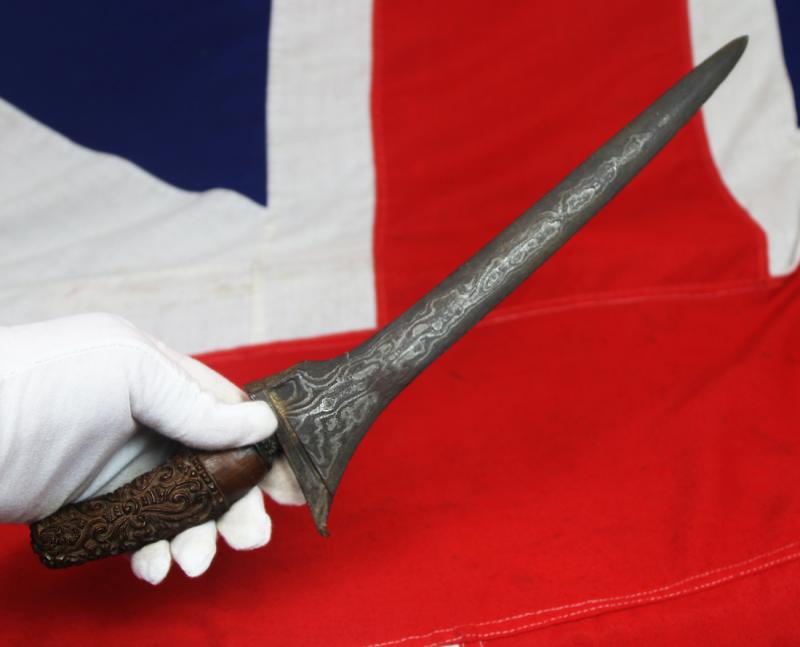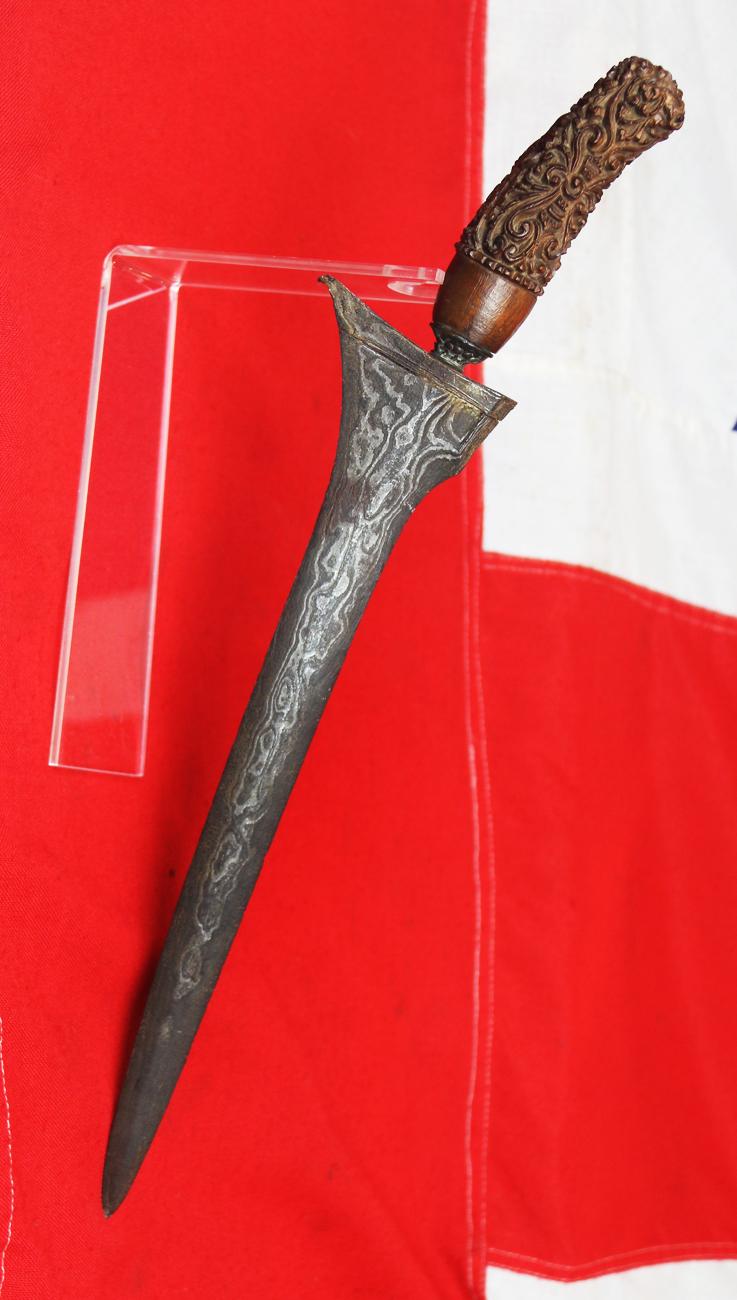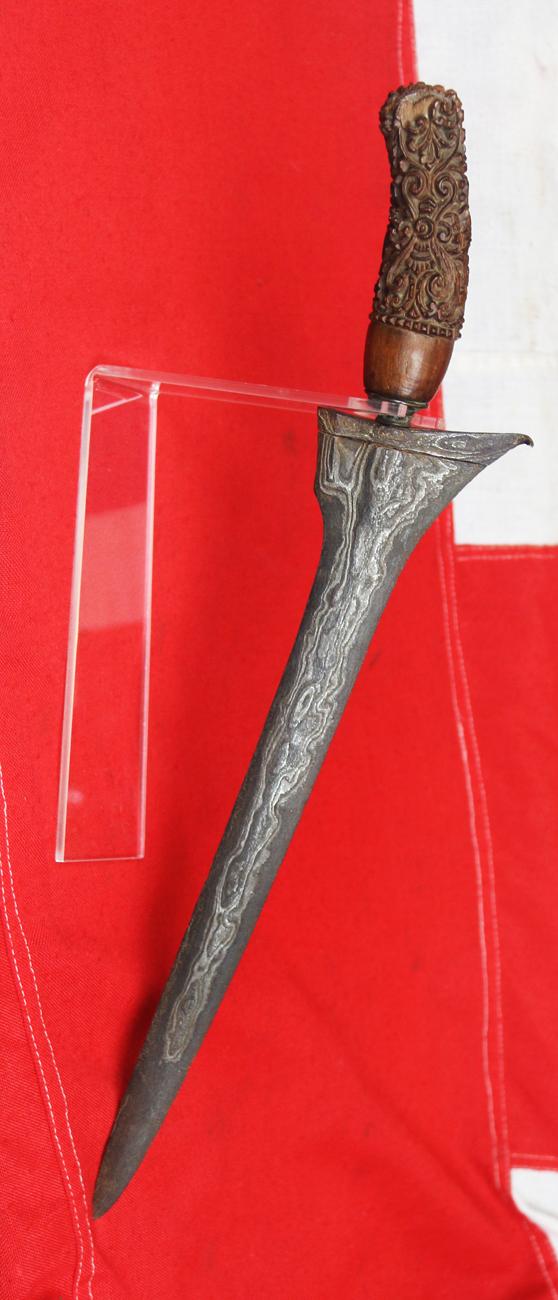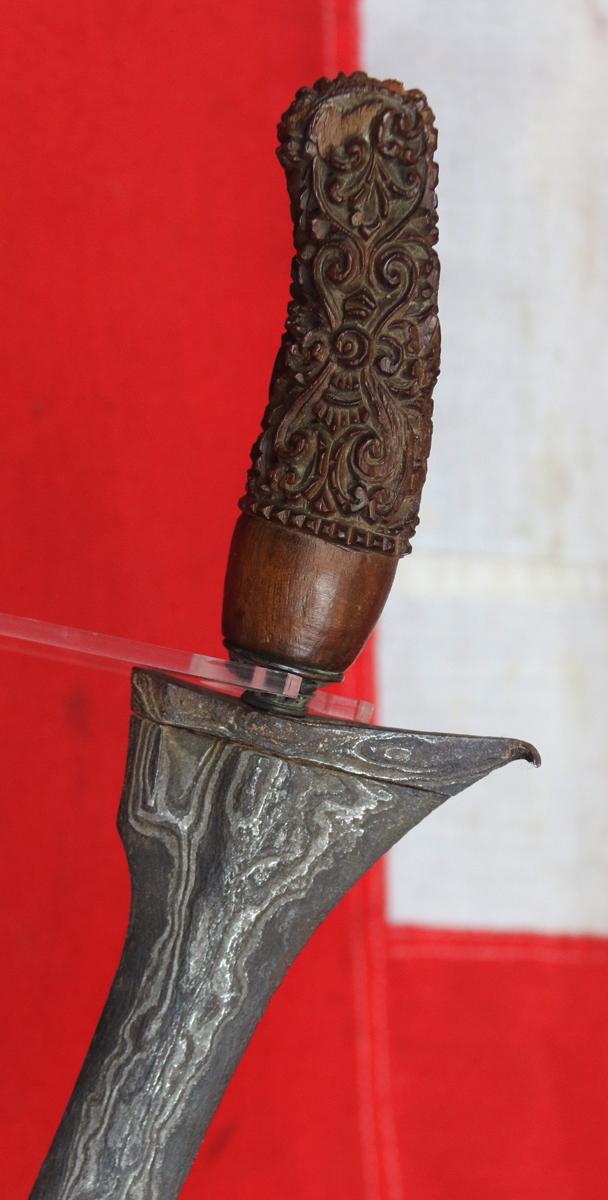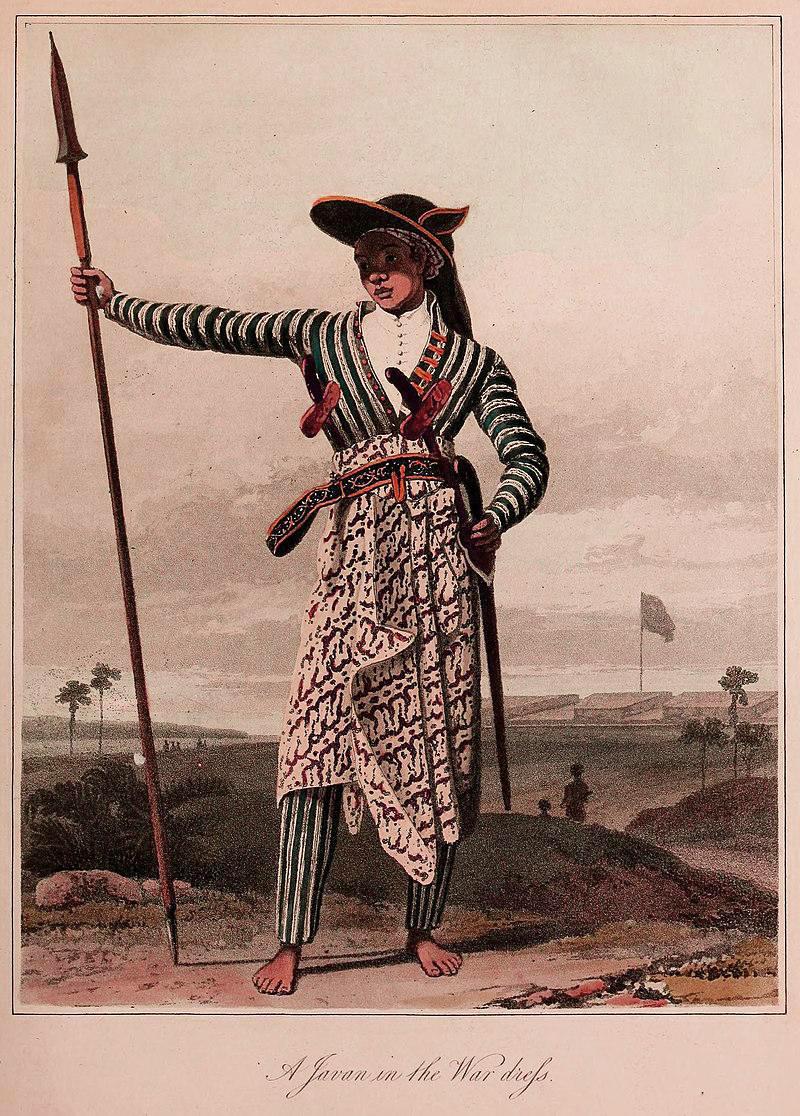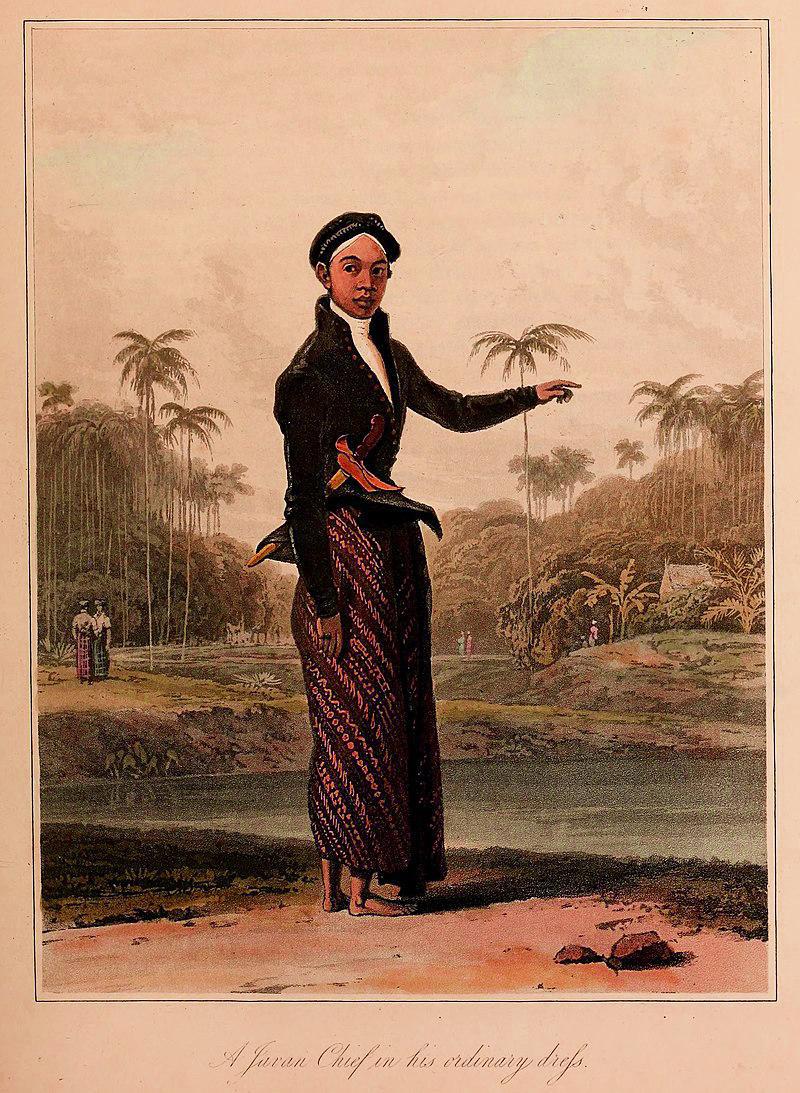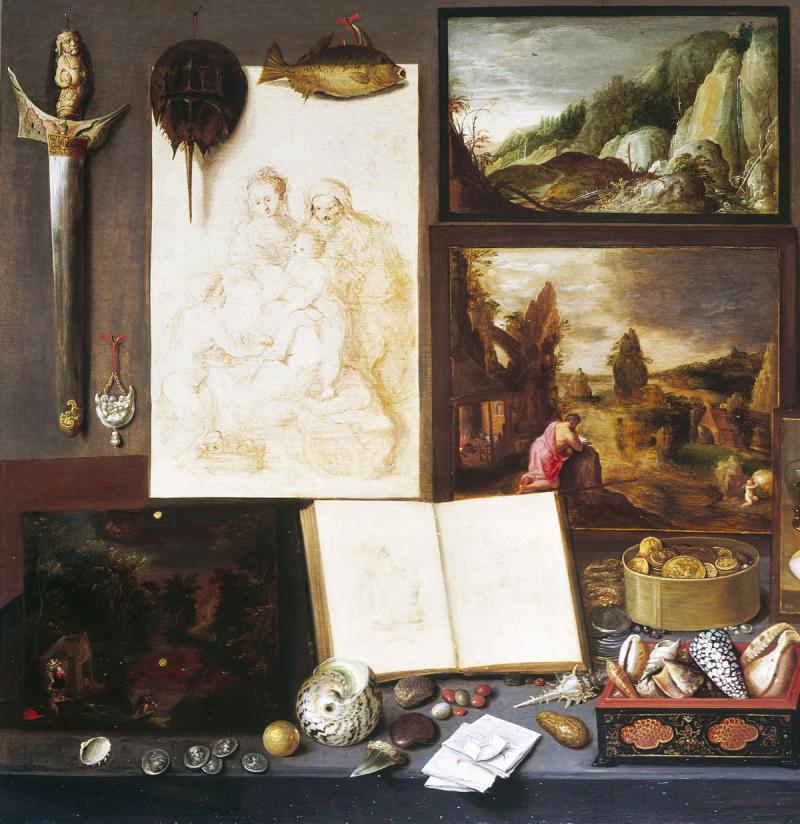A Fine Bladed Indonesian Keris, Nickel Iron Meteoric Blade
19th Century Keris Dagger/Sword, but the blade may be far older. This Indonesian ceremonial dagger or Keris is believed to date from the 1800's based on the style, materials and condition of the steel. The handle made of wood indigenous to Java, appears to be from the 19th century. As the keris is handed down from generation to generation (sometimes over centuries), the wooden handle and scabbard are often replaced with the blade remaining original. Used in cultural ceremonies and traditionally worn as a symbol of status, the Keris is an important cultural item in Indonesian and Malaysian cultures. This particular example is done in the dapur bener (straight blade) style, and was hand forged with alternating laminations of so-called iron and meteoric nickel-rich iron. As a historic item that the blade can bu up to 300 years old or more, there is some rust and pitting in parts on the blade. However, the unique patterns of nickel in the steel are very visible on the blade and the edges are still quite sharp.
Painting in the Royal Collection by Frans Francken the Younger in the gallery, photo 10, painted in 1617, titled 'Cabinet of a Collector', clearly shows, top left, a 16th century Kris dagger, Even as early as the 16th century, awareness and collectability of the Indonesian kris had reached far into Europe.
The kris or keris is a distinctive, asymmetrical dagger from Indonesia. Both weapon and spiritual object, the kris is considered to possess magical powers. The earliest known kris go back to the tenth century and most probably spread from the island of Java throughout South-East Asia.
Kris blades are usually narrow with a wide, asymmetrical base. The sheath is often made from wood, though examples from ivory, even gold, abound. A kris’ aesthetic value covers the dhapur (the form and design of the blade, with some 40 variants), the pamor (the pattern of metal alloy decoration on the blade, with approximately 120 variants), and tangguh referring to the age and origin of a kris. A bladesmith, or empu, makes the blade in layers of different iron ores and meteorite nickel. In high quality kris blades, the metal is folded dozens or hundreds of times and handled with the utmost precision. Empus are highly respected craftsmen with additional knowledge in literature, history and occult sciences.
Kris were worn everyday and at special ceremonies, and heirloom blades are handed down through successive generations. Both men and women wear them. A rich spirituality and mythology developed around this dagger. Kris are used for display, as talismans with magical powers, weapons, sanctified heirlooms, auxiliary equipment for court soldiers, accessories for ceremonial dress, an indicator of social status, a symbol of heroism, etc
No scabbard
Code: 24678
345.00 GBP

